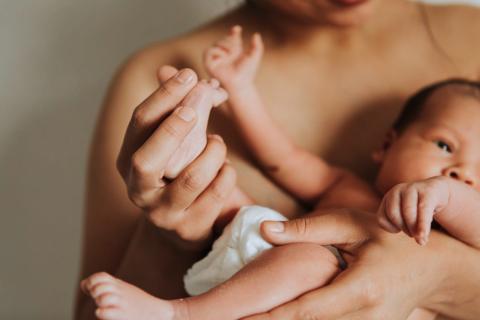Neutrophils that reinforce the physical barrier of the skin discovered
A CNIC research team has identified a population of skin neutrophils that reinforce the physical protection of the tissue against infection. These immune cells are known for their microbicidal role, and the study published in Nature reveals that they also produce an extracellular matrix that reinforces the physical barrier of the skin.

Silvia Vidal Alcorisa - neutrófilos EN
Silvia Vidal Alcorisa
Senior Researcher at the Research Institute of the Hospital de Sant Pau
The study shows that neutrophils, a type of white blood cell, not only help to fight infections, but also play a key role in the structure and maintenance of tissues, especially the skin. Using various advanced molecular and imaging methods in mouse models, the researchers have discovered that these neutrophils, influenced by the biological clock, influence collagen production and the formation of collagen fibres, helping to give support and firmness to tissues. This process seems to be regulated by the TGF-β molecule, which boosts the capacity of neutrophils to participate in the formation of the extracellular matrix. Furthermore, it has been observed that in mice with low levels of neutrophils, collagen fibres are thinner and less dense, resulting in less resistant skin. An experimental model of small wounds in the skin has shown that the extracellular matrix produced by neutrophils is key to healing. In addition, neutrophils that are also found in undamaged skin appear to play a protective role by preventing the entry of harmful molecules and pathogens.
These findings go beyond the classic role of neutrophils in the response to infections, and position them as structural regulators of tissue that contribute to its protection. A better understanding of this function could help explain diseases in which tissue structure is damaged, such as fibrosis or problems with wound healing. If these mechanisms also occur in humans, new possibilities could open up for improving the treatment of chronic wounds or diseases that affect connective tissue.
Tommaso Vicanolo et al.
- Research article
- Peer reviewed



